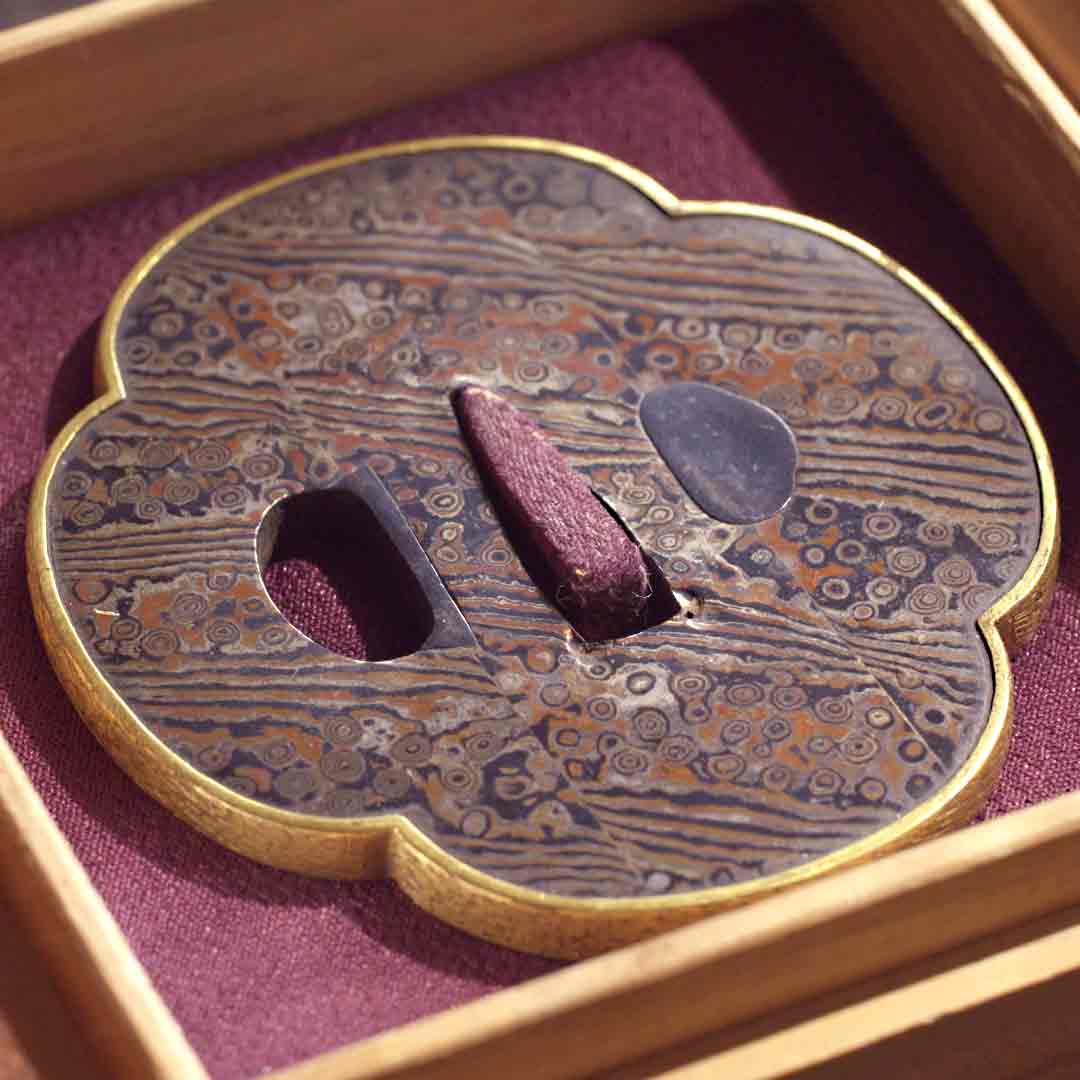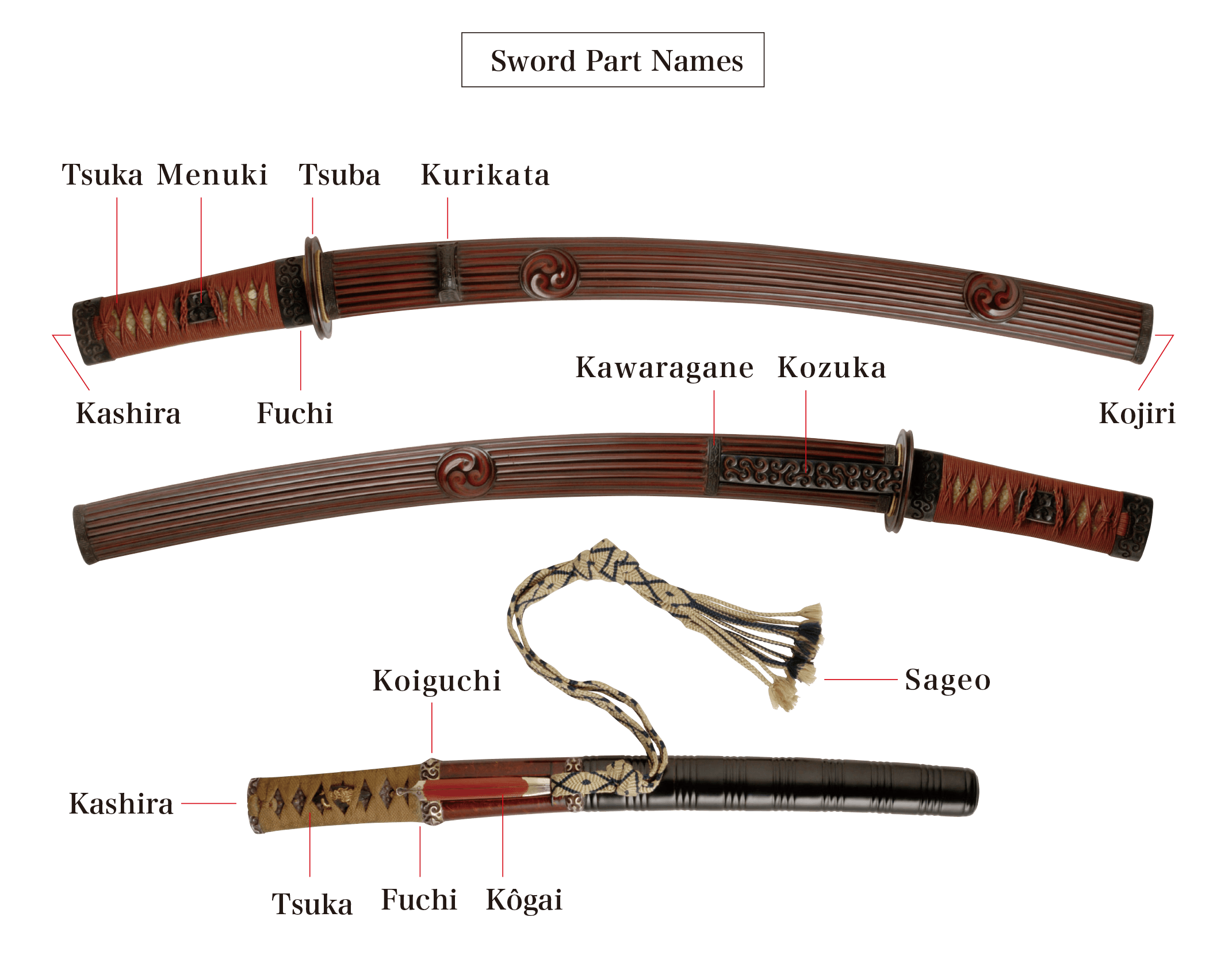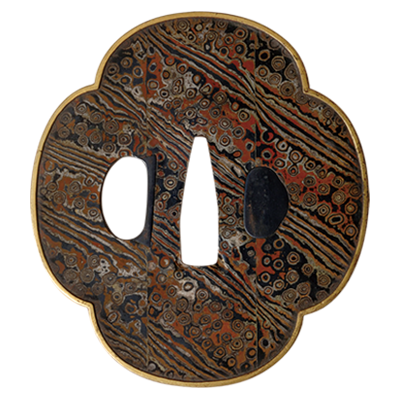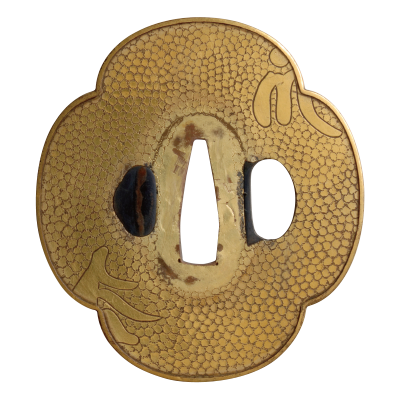Mokume Gane Tsuba Unsigned
Mid-to-late Edo period
Shakudo, Copper, Gold, Silver
【 Dimensions(mm)】- H 83.5 x W 74.8 x T 5.3 / 189.2g
- 【 Date of production 】
- Mid-to-late Edo period
- This tsuba is thought to belong to the school of Shoami Denbei. It is
plated on the mimi (rim) and on the back.
Within the timeline of mokume gane, the technique for the pattern
resembles the kozuka by Shoami Denbei (see page 14) with its round
mokume pattern. In addition, the kind of slanting pattern seen on this
tsuba can only be achieved by twisting a billet (bar) of a suitable size
and, of note, this piece involved the joining of three billets.
Both the shape and color combination are gorgeous. In the world of
mokume gane where simple patterns are common, this kind of tsuba
stands out as an unusual and elegant piece.
- <
- 1
- >



